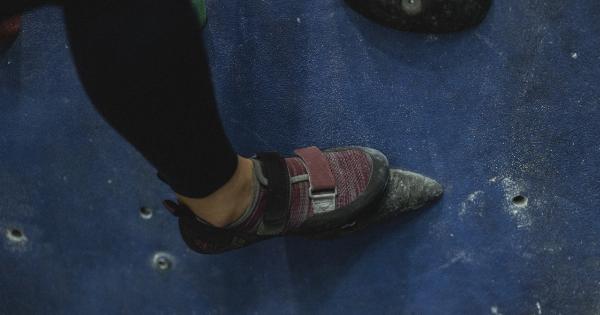Osteoporosis is a condition characterized by weakened and brittle bones, making them more susceptible to fractures.
It is often associated with aging, particularly in postmenopausal women, but there are surprising correlations between optimum physical health and the risk of developing osteoporosis. In this article, we will discuss how certain aspects of physical wellness can inadvertently contribute to osteoporosis, explore risk factors, and highlight preventive measures to maintain and improve bone health.
Understanding Osteoporosis
Osteoporosis, which translates to “porous bones,” is a metabolic bone disease that gradually weakens bones over time.
It occurs when the rate of bone loss exceeds the rate of bone formation, resulting in low bone mineral density (BMD) and structural deterioration. Osteoporosis affects both men and women, but women are at a higher risk, especially after menopause due to decreased estrogen levels.
The Paradox of Optimum Physical Health
While engaging in regular physical activity and maintaining overall good health is usually associated with positive outcomes, it is important to recognize that certain factors within the realm of physical wellness may inadvertently raise the risk of developing osteoporosis.
1. Intense Exercise and Hormonal Imbalances
High-intensity exercise, such as long-distance running or intense weightlifting, can trigger hormonal imbalances that adversely affect bone health.
Intense exercise, especially without sufficient rest and recovery periods, can lead to decreased levels of estrogen or testosterone, which are vital for maintaining bone density.
2. Dietary Deficiencies
Optimum physical health necessitates a balanced diet providing adequate nutrients for overall well-being. However, individuals focused on weight loss or intense training may unknowingly consume insufficient calories or follow restrictive diets.
These dietary deficiencies can lead to inadequate intake of essential nutrients like calcium, vitamin D, protein, and other micronutrients crucial for maintaining healthy bone density.
3. Overemphasis on Low Body Weight
In various athletic disciplines and aesthetic pursuits, low body weight is often prioritized.
While achieving and maintaining a healthy weight is important, excessively low body weight or severe weight fluctuations can weaken the bones by causing hormonal imbalances and lowering BMD.
4. Competitive Sports and Overtraining
Participating in competitive sports can be immensely rewarding. However, the demands and pressures associated with high-level competition can result in excessive training, inadequate rest, and increased risk of osteoporosis.
Overtraining can disrupt hormonal balance and contribute to decreased BMD.
5. Psychological Stress and Bone Health
Chronic psychological stress has been linked to various health issues, including compromised bone health.
Elevated levels of cortisol, the primary stress hormone, can negatively impact bone formation and density, potentially increasing the risk of osteoporosis.
Risk Factors for Osteoporosis
Understanding the risk factors associated with osteoporosis is crucial for early detection and prevention. Here are some significant factors that contribute to the development of osteoporosis:.
1. Age and Gender
Advanced age is a primary risk factor for osteoporosis, with bone density naturally decreasing as we grow older. Women are particularly vulnerable due to hormonal changes during menopause that accelerate bone loss.
2. Family History
Genetics play a vital role in determining an individual’s risk of osteoporosis. If you have a family history of osteoporosis, your likelihood of developing the condition increases.
3. Hormonal Imbalances
Decreased levels of estrogen or testosterone due to menopause or certain medical conditions can contribute to reduced bone density and increase the risk of osteoporosis.
4. Sedentary Lifestyle
Lack of physical activity or a sedentary lifestyle can lead to weaker bones, as they require regular weight-bearing exercises to strengthen and maintain bone health.
5. Smoking and Excessive Alcohol Consumption
Both smoking and excessive alcohol consumption have negative effects on bone health. Smoking interferes with the body’s ability to absorb calcium, while alcohol disrupts the balance of bone remodeling.
Preventive Measures for Optimal Bone Health
Rather than discouraging physical health, it is important to raise awareness about preventive measures that can help maintain and improve bone health while enjoying an active lifestyle. Here are some essential strategies:.
1. Balanced Diet and Proper Nutrition
Ensure your diet includes adequate amounts of calcium, vitamin D, protein, and other nutrients essential for healthy bones. Leafy greens, dairy products, fatty fish, and fortified foods are excellent sources of these nutrients.
2. Weight-Bearing Exercises
Incorporate weight-bearing exercises into your fitness routine, such as walking, jogging, dancing, or weightlifting. These activities stimulate bone formation and help improve bone density.
3. Resistance Training
Add resistance training exercises to your routine to strengthen muscles and bones. Exercises using free weights, resistance bands, or weight machines can enhance bone density and overall physical health.
4. Hormone Replacement Therapy (HRT)
If you are postmenopausal and at a higher risk of osteoporosis due to hormonal imbalances, consult with your healthcare provider about hormone replacement therapy (HRT) options to maintain optimal hormone levels and bone health.
5. Limit Alcohol Consumption and Quit Smoking
Reducing alcohol consumption and quitting smoking are essential steps to improve bone health. Seek support if necessary, as breaking these habits can be challenging but immensely beneficial for overall well-being.
Conclusion
While optimum physical health is generally associated with positive outcomes, it is important to recognize the potential risks it may pose to bone health.
Osteoporosis, a condition characterized by weakened bones, can be influenced by factors such as intense exercise, dietary deficiencies, overemphasis on low body weight, overtraining, and chronic psychological stress. It is essential to identify these risk factors, understand the importance of preventive measures, and prioritize bone health to mitigate the risk of osteoporosis.
By adopting a balanced diet, engaging in weight-bearing and resistance exercises, considering hormone replacement therapy if necessary, and avoiding harmful habits like excessive alcohol consumption and smoking, individuals can better safeguard their bone health and maintain an active and fulfilling lifestyle.






























